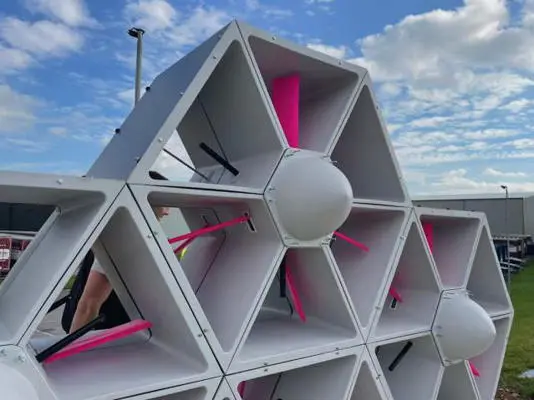Scotland-based startup Katrick Technologies has designed innovative honeycomb-shaped bladeless wind turbines that are transforming the renewable energy landscape. Despite being in the early stage, the company has left a considerable mark on wind turbine technology.
These new wind turbines with a honeycomb design are noticeably more compact, making them especially suitable for urban environments, as they have the ability to be integrated into existing buildings and similar structures.
Bladeless wind turbines: How do they work?
“Oscillating aerodynamic wings” are used instead of the conventional rotations found in traditional fan designs. These aerofoils make it possible to capture even lower levels of wind, thus generating an even more sustainable form of energy .
According to the company, the process is described as the conversion of the kinetic energy of the wind into mechanical oscillations that are amalgamated to be transformed into electricity. In simple terms, airfoils capture the movement of the wind and convert it into energy.
It should be noted that the more stationary configuration of these bladeless wind turbines means that these structures should not present a greater risk of bird collisions compared to other types of buildings, thus aligning with the desired ecological standards.
About its design
The Katricks have a design that more closely resembles hexagon-shaped fans, incorporating oscillating airfoils that move slowly in specific sections of the honeycomb pattern. So far, the company has not publicly addressed the issue of bird safety, although it seems clear that it would be feasible to place screens around these turbines to prevent the entry of animals and debris.
In addition to its smaller size, this design comes with a cost reduction and is described as “discreet” by its manufacturer. It takes up limited space, has a “minimal impact on the environment and wildlife” and is characterized by its durability. However, there are criticisms, such as those expressed by MIT Technology Review in 2015, that despite the lower costs and reduced footprint in manufacturing bladeless turbines, they offer limited benefits in terms of functionality and have less potential. of power generation compared to other options.
This particular design will likely need to occupy considerably more horizontal space to generate the same amount of power as a conventional wind turbine that is also built vertically. However, Katrick claims on its website that ” just 1 km of our road panels could charge 80,000 90 kW Tesla cars or power 760 homes each year .”
Don’t miss any of our posts and follow us on social media!
Inspenet.com YouTube LinkedIn Facebook Instagram
Source: msn.com

